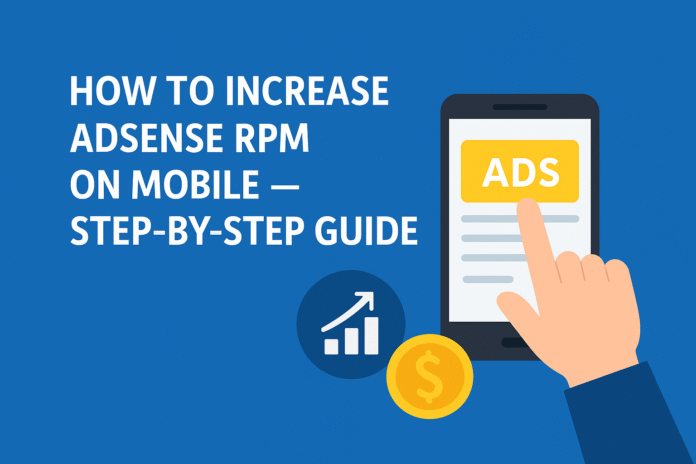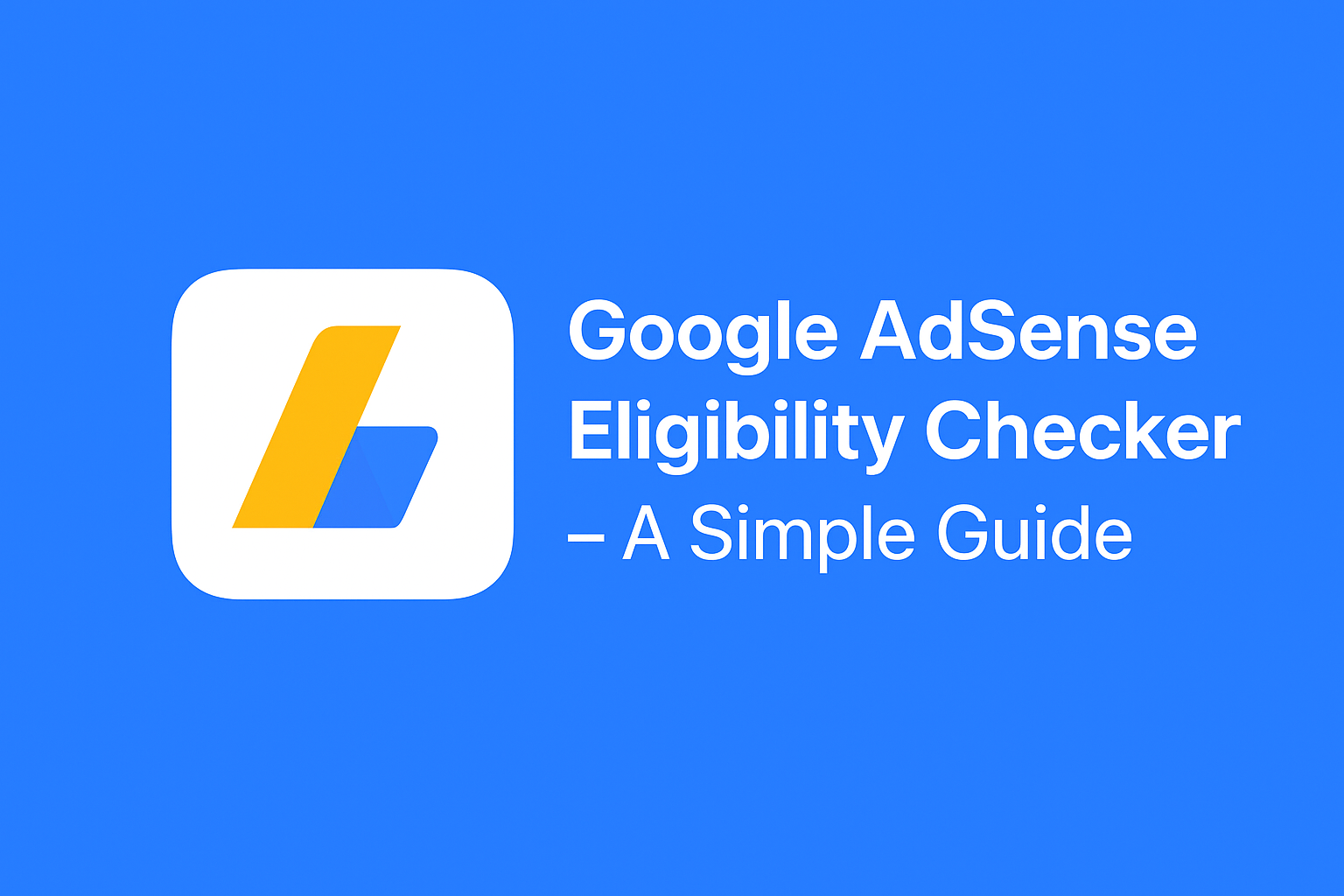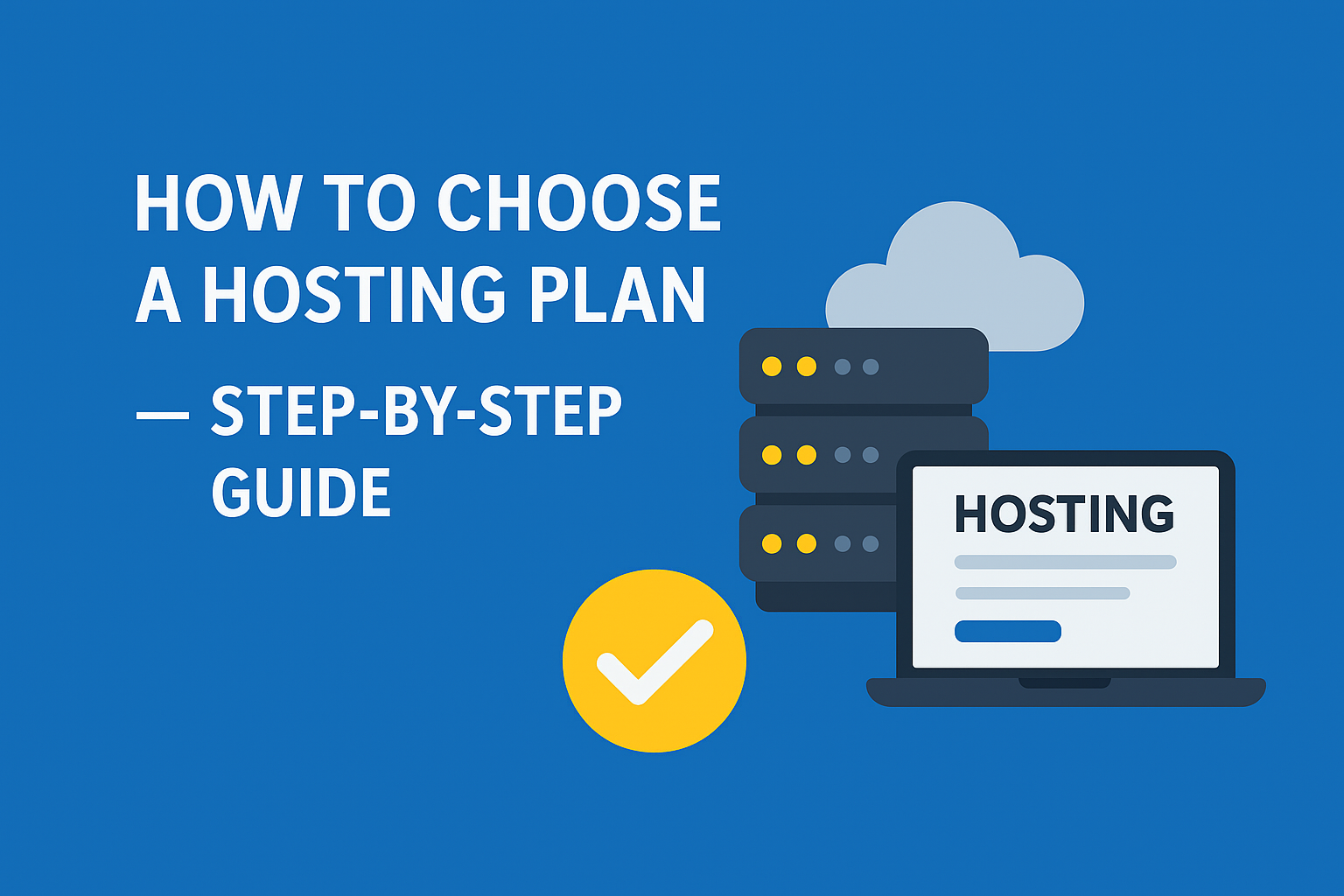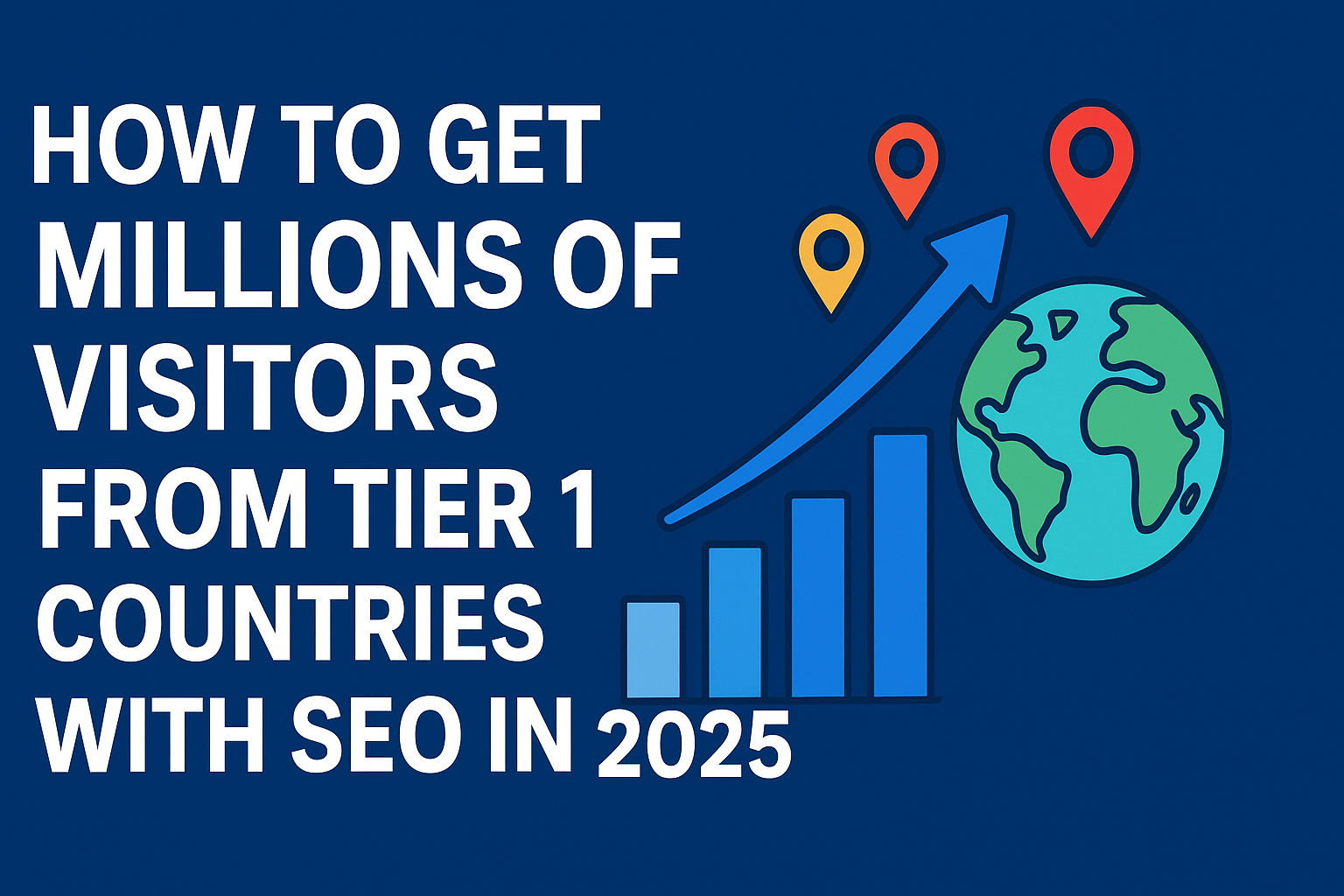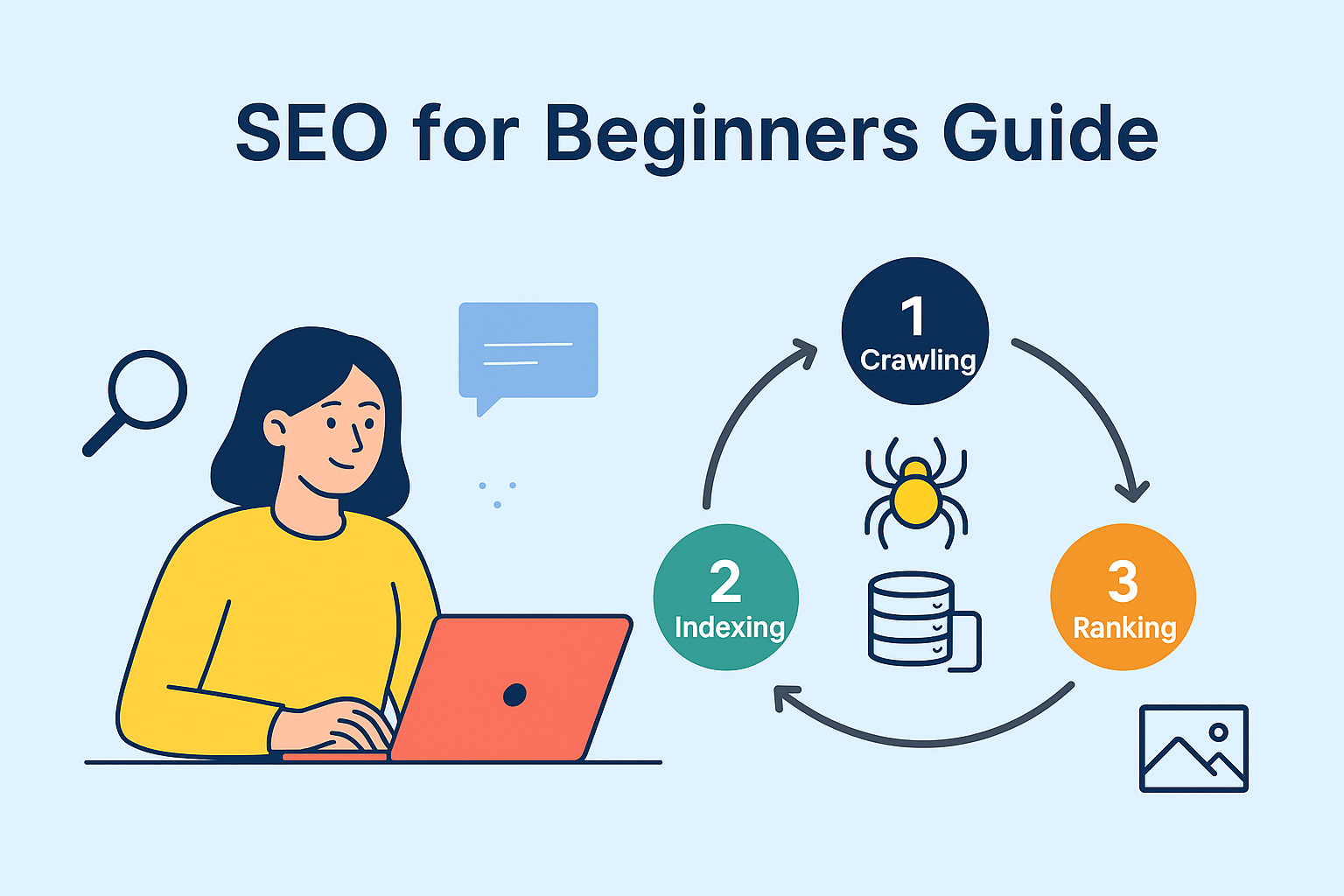Mobile traffic is huge. If you want more revenue from AdSense, improving RPM on mobile should be a top priority. RPM (revenue per thousand impressions) shows how much you earn for every 1,000 page views. You can calculate it like this:
Page RPM = (Estimated earnings / Page views) × 1000. (Google Help)
Below is a simple, step-by-step guide in easy English. Follow these steps, test carefully, and track results. I also added tables, high-value keyword ideas, and helpful links.
Quick overview: Why mobile RPM matters
- Most users browse on phones. Mobile visits can be 60–80% of your traffic depending on niche.
- Mobile ad units behave differently (screen size, speed, viewability). Optimizing for mobile often gives the best RPM lift.
- Google recommends testing responsive ad units and mobile placements to improve earnings. (Google AdSense)
Step 1 — Measure baseline and set goals (Day 0)
- Open your AdSense dashboard and note current Page RPM and Ad RPM for mobile.
- Link AdSense to Google Analytics / GA4 to see mobile device behavior (time on page, bounce rate). This helps spot weak pages. (Google AdSense)
- Set a realistic goal (for example: increase mobile RPM by 20% in 30 days).
Why this matters: You can’t improve what you don’t measure.
Step 2 — Improve mobile page speed (Day 1–7)
Faster pages = better viewability and happier users. Faster sites usually earn more because ads load sooner and get seen.
Action items:
- Use a fast theme and a good host (Hostinger is a budget option many publishers use). (Hosting)
- Compress images, enable lazy loading, use a caching plugin, and enable a CDN.
- Test pages with Google PageSpeed Insights and fix the top 3 issues first.
Sources and tips: Google and ad partners recommend improving loading speed for better ad performance. (Google AdSense, AdPushup)
Step 3 — Use responsive ad units and mobile-friendly ad sizes (Day 3–10)
- Use responsive ad units so ads adapt to screen width. This prevents broken layouts on phones. (Google AdSense)
- Test these mobile formats: in-article responsive ads, large mobile banner (320×100), and native / matched-content units where allowed.
- Avoid fixed wide leaderboards on mobile — they break UX. Replace with responsive versions.
Tip: Start with one large in-content ad and one mobile sticky footer. Test one change at a time.
Step 4 — Place ads where users look (Day 5–14)
Good placement increases viewability and CTR, which lifts RPM.
Recommended placements for mobile:
- Top of article (above the first paragraph) — good for visibility. (Google Help)
- Inside article (after 1–2 paragraphs) — users read content and see ads. (MonetizeMore)
- Sticky footer or mobile anchor (use carefully and follow AdSense policy). (Google Help)
Do not overload pages with too many ads. Bad UX can reduce traffic and get policy warnings. Always follow Google’s ad placement rules. (Google Help)
Step 5 — Improve viewability & reduce ad latency (Day 7–21)
Viewability = the percent of ads that are actually seen. Higher viewability usually increases CPM and RPM.
How to improve:
- Preload critical ad slots and use lazy load for below-the-fold ads.
- Keep important ad slots above the fold and avoid long ad load delays.
- Use asynchronous ad code where possible and keep JavaScript optimized.
Industry guides show viewability strongly affects CPM—publishers who increase viewability often see RPM gains. (Reddit, AdPushup)
Step 6 — Target high-value keywords & high CPC niches (ongoing)
High CPC keywords bring higher bids from advertisers. Create content that targets high-value search intent.
High-value niches (examples with historically higher CPC):
Sample high-value mobile keywords you can test:
- “best web hosting for WordPress”
- “cheap business insurance quote”
- “compare small business loan rates”
- “best antivirus for android 2025”
Table — Sample keyword plan
| Niche | Example keyword (intent) | Why it helps |
|---|---|---|
| Web hosting | best web hosting for blog (buy intent) | High advertiser bids (hosting companies pay well) |
| Finance | personal loan rates near me | Strong commercial intent, high CPC |
| Software | best accounting software for small business | B2B advertisers pay higher CPC |
| Hosting/Tech | Hostinger vs other hosts | Hosting affiliate demand is high |
Use keyword tools (Google Keyword Planner, SEMrush) to find exact CPC and volume before writing. (PPC.io, AdPushup)
Step 7 — Improve traffic quality (focus on Tier-1 countries) (ongoing)
Advertisers pay more for clicks from countries like USA, UK, Canada, Australia. If your traffic is mostly low-CPC countries, RPM will be lower.
Action items:
- Create content aimed at Tier-1 audiences (language, local examples).
- Use SEO and social channels to attract tier-1 visitors. See this guide for growing USA traffic safely. (High Traffic)
Note: Don’t use paid or fake traffic. Google disapproves of low-quality traffic and non-compliant sources. (Google Help)
Step 8 — A/B test ad layouts and try header bidding or mediation (Day 14–40)
- Run simple A/B tests (split traffic with two layouts) and measure RPM uplift.
- Consider header bidding or mediation to increase bids (but start simple; advanced setups need care). Monetization partners and ad tech blogs show header bidding can increase RPM when done right. (Setupad.com, MonetizeMore)
Step 9 — Use good content structure and increase page length (ongoing)
Longer useful pages often support more ad slots and keep users engaged (but don’t stuff ads). Aim for helpful, skimmable content: headings, bullet lists, images, and tables.
Also add required pages before applying or optimizing AdSense: Privacy Policy, About, Contact, etc. (Check This)
Step 10 — Protect policy compliance and user trust (always)
- Follow AdSense program policies. Violations hurt RPM and can lead to account issues. (Google Help)
- Avoid deceptive placements or tricks that cause accidental clicks.
- Always give users a good reading experience—long term trust beats short term gains.
Before & After Optimization — Example Table (illustrative)
| Metric | Before | After (target) |
|---|---|---|
| Mobile Page RPM | $1.20 | $1.80 |
| CTR (mobile) | 0.45% | 0.70% |
| Avg. Page Load (mobile) | 6.2s | 2.8s |
| Viewability | 28% | 55% |
These numbers are examples. Real results depend on niche, traffic country, ad demand, and content quality. Industry case studies show good optimization can provide meaningful lifts. (AdPushup, Publift)
30-Day Action Plan (simple checklist)
- Week 1: Measure baseline; fix top 3 PageSpeed issues; switch to responsive ads.
- Week 2: Add in-article ads; test sticky footer; optimize images.
- Week 3: Publish 3 high-CPC intent articles and promote to Tier-1 audiences.
- Week 4: Run A/B test on ad layout; evaluate RPM and repeat best winners.
External resources (read first)
- Google: Page RPM definition and calculation. (Google Help)
- Google AdSense best practices (ad unit, responsive ads). (Google AdSense)
- AdSense ad placement best practices. (Google Help)
- Industry guides on RPM and optimization (AdPushup, Publift). (AdPushup, Publift)
- AdSense + gaming script (Click for Get Free Script)
- Hostinger hosting (recommended for speed & uptime)
- Guide on safe USA traffic for AdSense (Click Here)
- AdSense eligibility checker (Click Here)
Final tips — keep testing and be patient
- Small changes compound. A faster page + one better ad placement + one high-value article can lift mobile RPM noticeably. (AdPushup)
- Track everything, change one variable at a time, and give each test 1–2 weeks of data.
- Focus on user experience first — ads second. A happy reader is more valuable long term.


